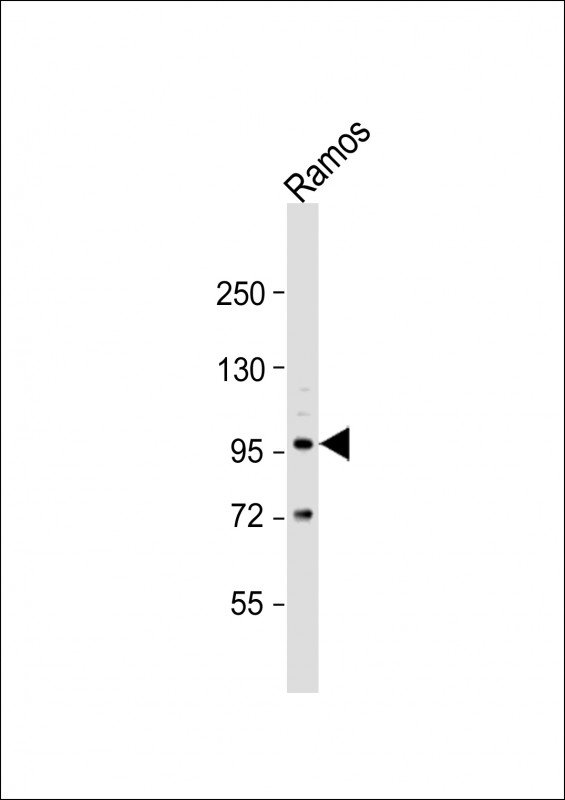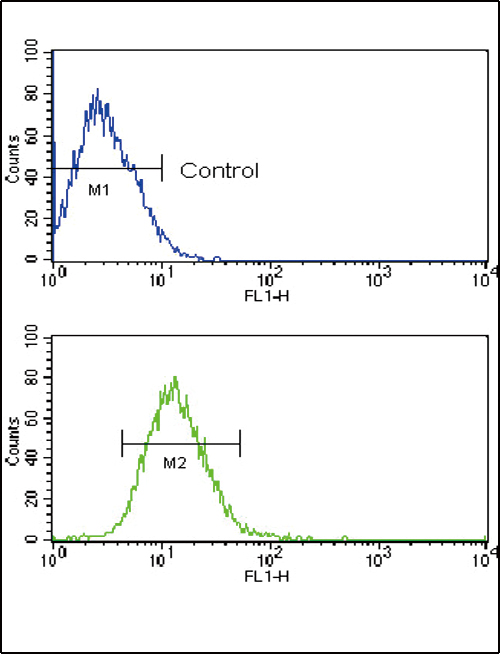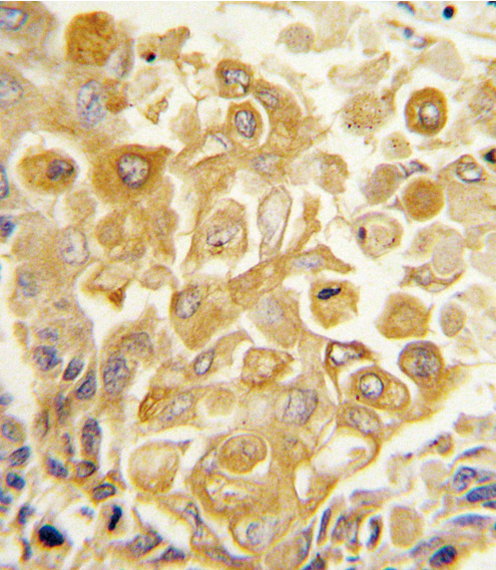


| WB | 1/1000 | Human,Mouse,Rat |
| IF | 咨询技术 | Human,Mouse,Rat |
| IHC | 1/100-1/500 | Human,Mouse,Rat |
| ICC | 技术咨询 | Human,Mouse,Rat |
| FCM | 1/10-1/50 | Human,Mouse,Rat |
| Elisa | 咨询技术 | Human,Mouse,Rat |
| Aliases | Toll-like receptor 2, Toll/interleukin-1 receptor-like protein 4, CD282, TLR2, TIL4 |
| Entrez GeneID | 7097 |
| WB Predicted band size | 89.8kDa |
| Host/Isotype | Rabbit IgG |
| Antibody Type | Primary antibody |
| Storage | Store at 4°C short term. Aliquot and store at -20°C long term. Avoid freeze/thaw cycles. |
| Species Reactivity | Human |
| Immunogen | This TLR2 antibody is generated from rabbits immunized with a KLH conjugated synthetic peptide between 212-242 amino acids from the N-terminal region of human TLR2. |
| Formulation | Purified antibody in PBS with 0.05% sodium azide,1%BSA and 50% glycerol.prepared by Saturated Ammonium Sulfate (SAS) . |
+ +
以下是关于TLR2 (N-term)抗体的3篇参考文献及其摘要内容:
1. **文献名称**:*Structural basis of TLR2/TLR1 heterodimer recognition by anti-TLR2 N-terminal antibodies*
**作者**:Jin MS, Kim SE, Lee JY, et al.
**摘要**:该研究解析了TLR2/TLR1异源二聚体的晶体结构,并利用针对TLR2 N端结构域的特异性抗体验证了其在病原体脂蛋白识别中的作用。抗体通过阻断TLR2的N端区域抑制下游信号通路,揭示了TLR2识别配体的分子机制。
2. **文献名称**:*Role of TLR2 N-terminal domain in innate immune response to bacterial lipopeptides*
**作者**:Takeuchi O, Hoshino K, Kawai T, et al.
**摘要**:研究使用针对TLR2 N端的抗体,证明该区域在结合细菌脂肽(如Pam3CSK4)中的关键作用。抗体抑制了TLR2依赖的NF-κB激活,证实了N端结构域在病原体识别和炎症信号传导中的功能。
3. **文献名称**:*TLR2-specific monoclonal antibodies detect endogenous receptor expression and differentiate ligand-induced signaling*
**作者**:Meng J, Lien E, Golenbock DT.
**摘要**:该文献报道了一种高特异性TLR2 N端抗体的开发与应用,通过流式细胞术和免疫印迹检测细胞表面TLR2表达。研究还发现抗体可区分配体结合前后TLR2的构象变化,为研究受体激活机制提供了工具。
以上文献聚焦于TLR2 N端结构域的功能验证、抗体开发及其在信号传导研究中的应用。
The TLR2 (N-term) antibody is a widely used tool in immunological research, targeting the N-terminal region of Toll-like receptor 2 (TLR2), a key pattern recognition receptor in the innate immune system. TLR2 is primarily expressed on immune cells like macrophages, dendritic cells, and neutrophils, where it detects conserved microbial components such as bacterial lipoproteins, peptidoglycans, and lipoteichoic acids. Its N-terminal domain, rich in leucine-rich repeats (LRRs), is critical for ligand recognition and dimerization with other TLRs (e.g., TLR1 or TLR6) to initiate downstream signaling via adaptor proteins like MyD88. ultimately triggering inflammatory cytokine production.
This antibody is commonly raised in hosts such as rabbits or mice, often validated for applications like Western blotting, immunofluorescence, flow cytometry, and immunohistochemistry. Specificity is confirmed using knockout controls or blocking peptides. Researchers employ it to study TLR2 expression patterns, ligand interactions, and signaling mechanisms in contexts like bacterial/viral infections, autoimmune diseases, and cancer. Commercial variants may differ in clonality (monoclonal/polyclonal), conjugation (e.g., HRP, FITC), or species reactivity (human, mouse, rat). Proper storage (typically at -20°C) and optimized dilution protocols are essential for maintaining functionality. Its role in elucidating TLR2's contribution to inflammation and host defense makes it indispensable in both basic and translational immunology studies.
×